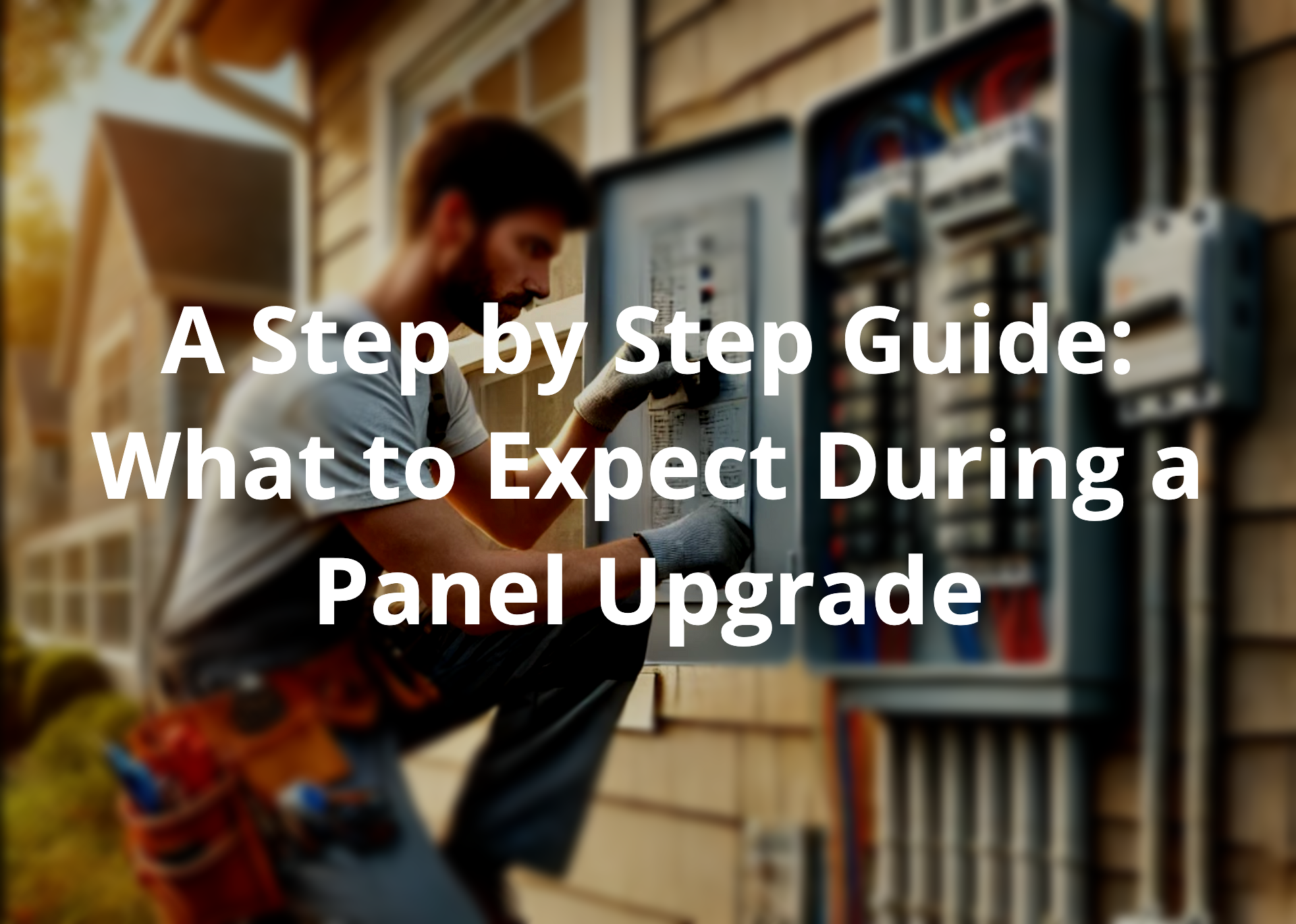
Step-by-Step Guide: What to Expect During an Electrical Panel Replacement
Replacing a home electrical panel can seem like a daunting task, but understanding the process can help ease concerns and ensure you know what to expect. Whether you’re upgrading an outdated Zinsco or Federal Pacific panel, replacing a home fuse box, or simply looking to boost your electrical capacity, this step-by-step guide will walk you through the entire process of a home panel replacement.
Initial Assessment and Inspection
The first step in replacing a home electrical panel is a thorough inspection by a licensed electrician to ensure.
This assessment involves:
Evaluating the Existing Panel: The electrician will inspect your current panel to determine its condition, age, and compatibility with modern electrical standards. This is crucial, especially if you have an older Zinsco or Federal Pacific panel, which are known to pose electrical faults and safety risks.
Assessing Electrical Load: The electrician will calculate your home’s electrical load requirements to determine the appropriate panel size for your needs. This step is essential if you’re considering future upgrades, like adding EV charging or solar panels.
Identifying Potential Issues: During the inspection, the electrician will look for outdated wiring, signs of corrosion, or any code violations that need to be addressed during the home panel change.
Choosing the Right Electrical Panel Panel
After the assessment, the electrician will recommend the right type and size of panel for your home. This could range from a standard 100-amp panel to a 200-amp panel, depending on your home’s electrical needs. Key considerations include:
Panel Amperage: Depending on the size of the house 200 amp may not be necessary, 100 amp may be sufficient.
Brand Selection: Both Siemens and SquareD electrical panels are reliable and will last a lifetime.
Surface or Flush Mount: Some owners desire the panel service riser to be hidden in the wall along with the panel being flush.
Future Proofing: Ensuring the panel has enough capacity to handle future upgrades, like additional circuits or smart home devices and EV chargers.
Obtaining Permits and Scheduling the Replacement
Before any work can begin, the electrician must obtain the necessary permits. This ensures that the replacement complies with local building codes and safety standards. Once permits are secured:
Scheduling the Replacement: The electrician will coordinate with you to find a suitable time for the replacement, as power to your home will be temporarily disconnected.
Power Shut-Off and Safety Preparations
On the day of the replacement, the electrician will start by shutting off the power to your home. Safety is the top priority, and this step is crucial to avoid any electrical hazards. The process includes:
Disconnecting Power from the Utility: The utility company may need to disconnect the power supply to your home, depending on your service arrangement.
Testing and Securing Circuits: The electrician will test all circuits to ensure they are safely de-energized before beginning work.
Removing the Old Panel
With the power off and safety measures in place, the old panel is carefully removed:
Disconnecting All Circuits: Each circuit is disconnected from the old panel. This step involves carefully labeling each wire to ensure accurate reconnection in the new panel.
Removing the Panel Box: The panel box is unscrewed and removed from the wall, along with any outdated components like fuse boxes or obsolete breakers.
Installing the New Electrical Panel
The new panel is then installed in place of the old one. This step involves:
Mounting the New Panel: The new panel is securely mounted in the same location as the old panel, or in a new spot if necessary.
Connecting Circuits: Each circuit is reconnected to the appropriate breaker in the new panel, following the labels and wiring plan created during the removal process.
Upgrading Components: If necessary, the electrician may upgrade other components, such as the grounding system or main service lines, to ensure compliance with current codes.
Testing and Inspection
After the installation is complete, the electrician will conduct a series of tests to verify that the new panel is functioning correctly:
Testing Each Circuit: Each breaker is tested to ensure it is properly connected and operating as expected.
Load Testing: The entire panel is tested under load to confirm it can handle the home’s electrical demands.
Final Inspection: A final inspection by the local building authority is typically required to certify that the installation meets all safety and code requirements.
Restoring Power and Final Walkthrough
Once the new panel has passed inspection, power is restored to your home. The electrician will conduct a final walkthrough to:
Explain the New Panel: Show you the layout of the new panel, including which breakers control specific circuits.
Provide Maintenance Tips: Offer advice on how to maintain the panel and what to do if a breaker trips in the future.
Answer Questions: Address any questions or concerns you may have about the new installation.
Why You Should Consider Replacing an Outdated Panel
Upgrading your home electrical panel is not just about safety; it’s about enhancing the overall functionality of your home’s electrical system. Replacing a Zinsco or Federal Pacific panel, or upgrading from a home fuse box, can provide peace of mind and improve your home’s resale value. Modern panels are designed to support the electrical demands of today’s technology, from high-efficiency appliances to smart home devices and EV charging stations.
Conclusion
Replacing your home electrical panel is a significant upgrade that requires professional expertise and careful planning. By understanding each step of the process, you can make informed decisions and ensure that your home is equipped with a safe and reliable electrical system for years to come.
Whether you’re considering a home panel upgrade, replacing a Zinsco panel, or upgrading from a fuse box, it’s important to work with a qualified electrician who can guide you through the process and deliver a high-quality installation that meets your needs. For expert advice and top-notch service, don’t hesitate to reach out to Suncoast Energy for your electrical panel upgrade needs.
